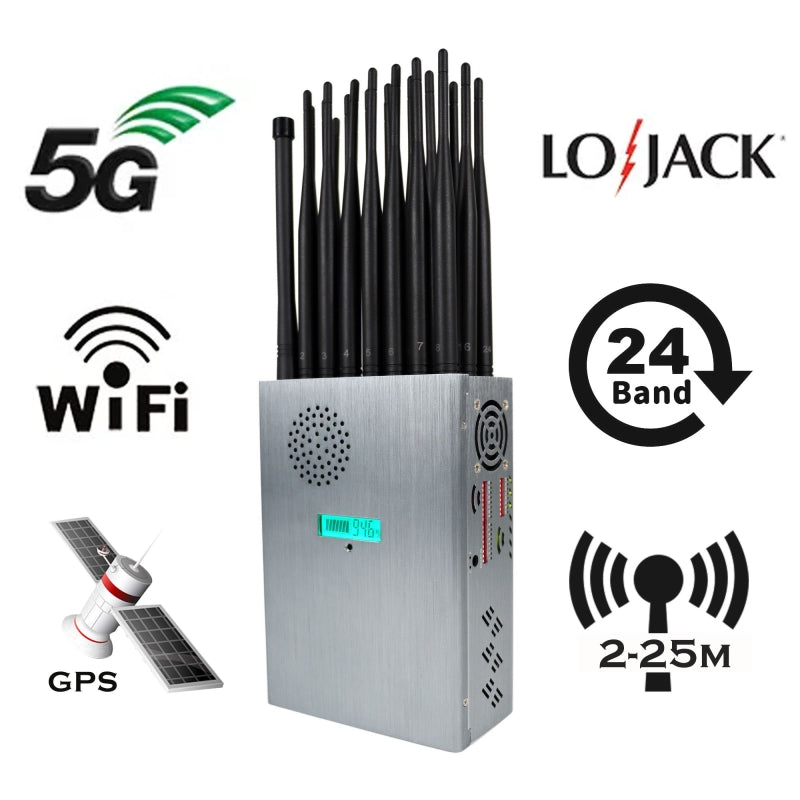What affects the shielding distance of a mobile phone signal jammer?
The shielding distance of a jammer for cell phone signal is affected by the following factors:
Power and antenna performance: The shielding distance of a mobile phone signal jammer is related to its output power and antenna performance. Generally speaking, the greater the output power, the better the antenna performance and the farther the shielding distance.

Frequency bands and signal types: Different frequency bands and signal types have different characteristics during transmission. Generally speaking, signals in higher frequency bands will have greater attenuation during transmission, so their shielding distance may be relatively short. At the same time, different signal types (such as 2G, 3G, 4G, 5G) may also be affected by different shielding effects.
Environment and obstacles: Objects such as buildings, walls, and obstacles will hinder and attenuate signal propagation. If the signal jammers for sale is used in an environment with a large number of obstacles or limited signal propagation, the shielding distance may be affected.
Weather conditions: Weather conditions (such as rain, snow, fog, etc.) may also have a certain impact on signal propagation. In adverse weather conditions, signal transmission distance may be reduced.
It should be noted that the above factors are only some common factors that affect shielding distance. The specific shielding distance may also be affected by other factors such as equipment quality, signal strength, and interference from the surrounding environment. Therefore, when selecting and using a cell phone signal jammer, it is best to refer to the device's specifications and instructions to understand its expected shielding distance and applicable conditions.













